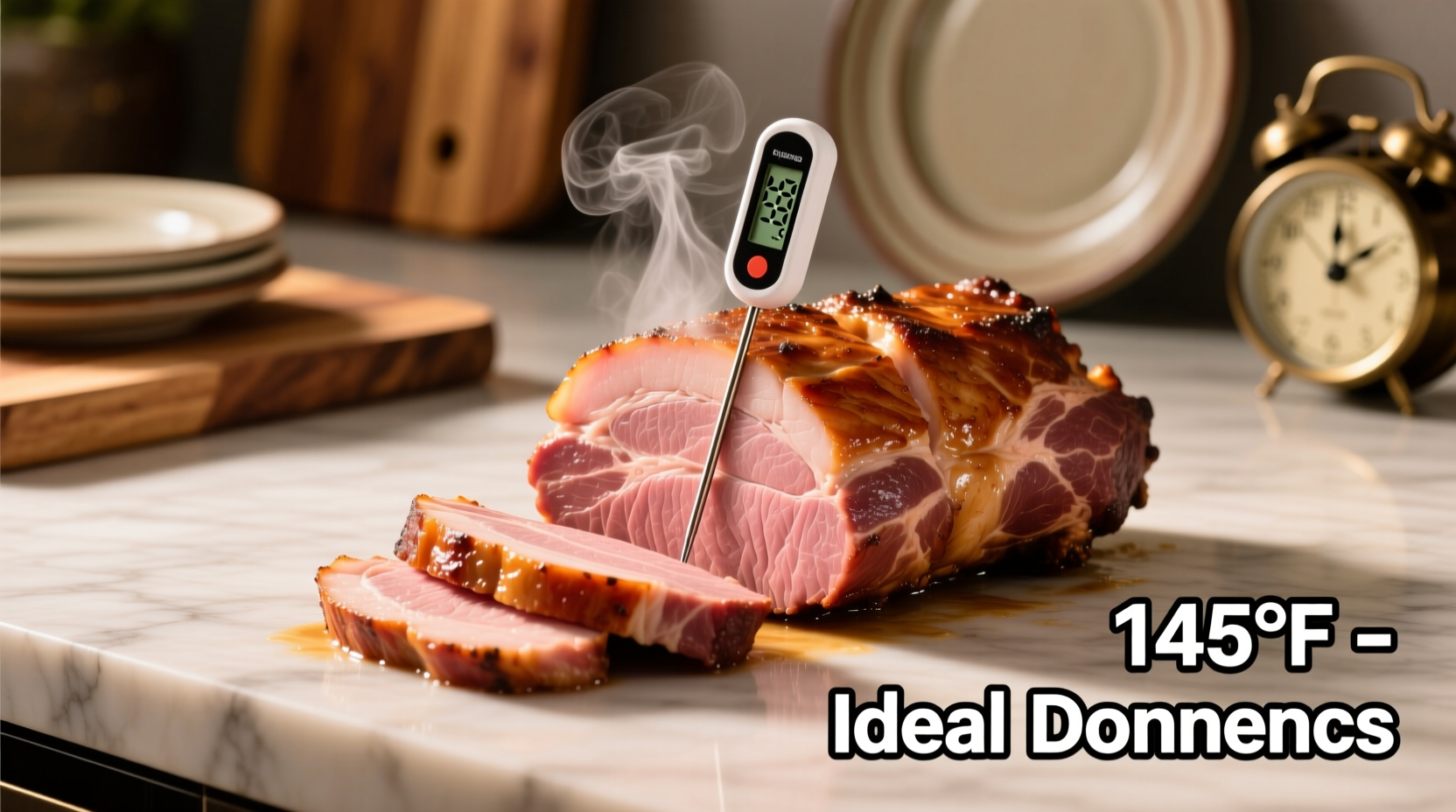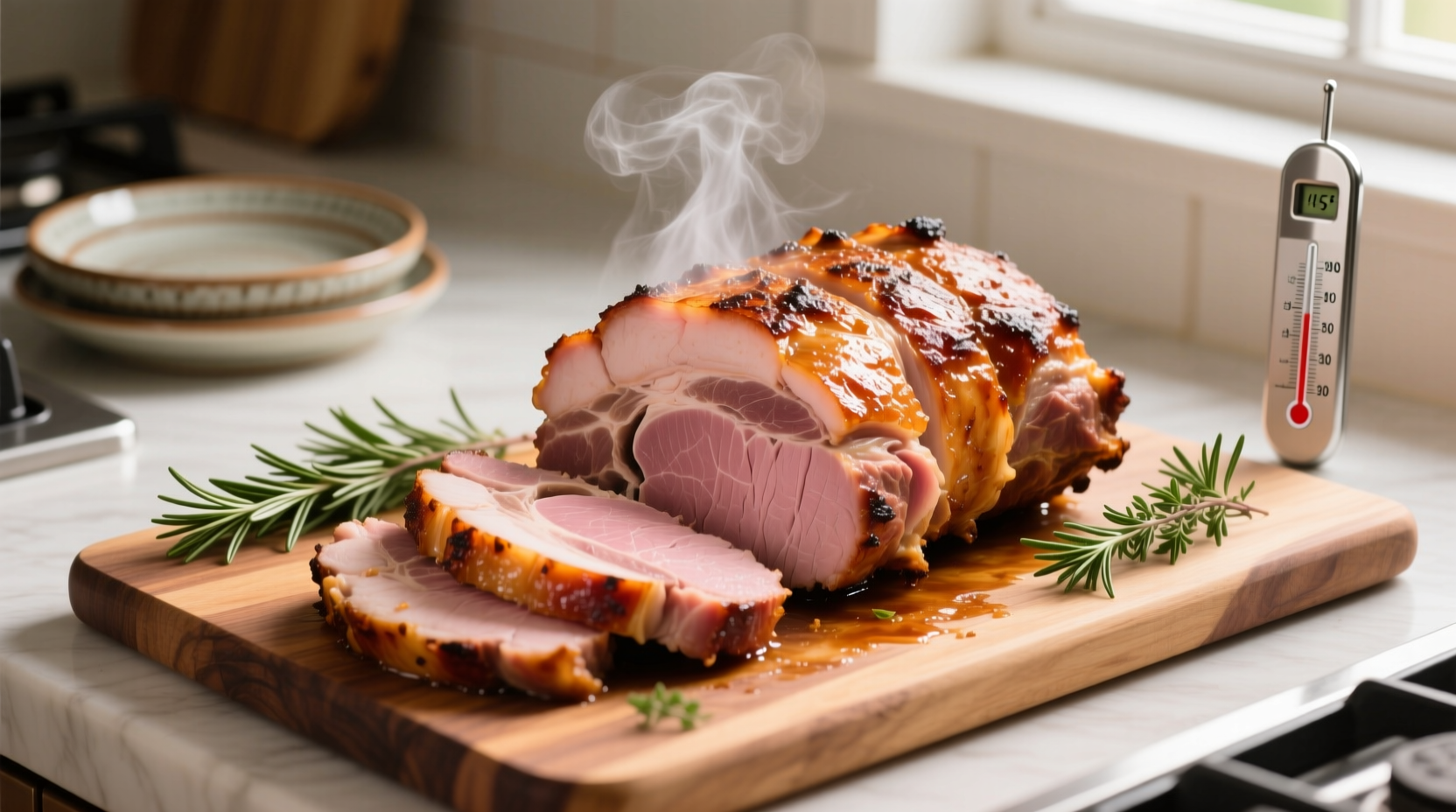Direct answer: A pork loin typically takes 20-25 minutes per pound to cook at 375°F (190°C) oven temperature, reaching a safe internal temperature of 145°F (63°C) with a 3-minute rest period. Total cooking time ranges from 45-75 minutes depending on size and cooking method.
Nothing ruins a special dinner faster than overcooked or undercooked pork loin. As a chef who's cooked thousands of pork loins in professional kitchens and home settings, I've seen how confusing cooking times can be—especially when recipes give conflicting advice. The good news? Perfectly cooked pork loin is completely achievable when you understand the science behind the timing. This guide cuts through the confusion with precise, tested cooking times that guarantee juicy, flavorful results every time.
Why Pork Loin Cooking Time Isn't One-Size-Fits-All
Unlike many foods, pork loin requires careful attention to both time AND temperature. The USDA updated its pork safety guidelines in 2011, lowering the recommended internal temperature from 160°F to 145°F with a 3-minute rest. This change, based on research from the USDA Food Safety and Inspection Service, allows for juicier results while maintaining safety.
| Cooking Method | Temperature | Time per Pound | Total Time (2-3 lb) | Rest Time |
|---|---|---|---|---|
| Oven roasting | 375°F (190°C) | 20-25 minutes | 45-75 minutes | 10-15 minutes |
| Grilling | Medium-high heat | 15-20 minutes | 35-60 minutes | 5-10 minutes |
| Sous vide | 140°F (60°C) | 1-4 hours | 1-4 hours | 1-2 minutes |
| Slow roasting | 275°F (135°C) | 45-60 minutes | 90-180 minutes | 15-20 minutes |
The Critical Factors That Change Your Cooking Time
Before you preheat your oven, consider these variables that significantly impact cooking time:
- Starting temperature: A pork loin straight from the refrigerator takes 15-20% longer to cook than one brought to room temperature
- Thickness variation: Most pork loins taper from thick to thin end—this affects even cooking
- Oven accuracy: Home ovens often vary by 25°F—use an oven thermometer for precision
- Roasting pan material: Dark metal pans cook faster than glass or ceramic
- Thermometer type: Instant-read thermometers give more accurate readings than pop-up timers

Your Step-by-Step Cooking Timeline
Follow this professional-tested sequence for perfect results:
Preparation Phase (15-30 minutes before cooking)
- Remove pork loin from refrigerator 30 minutes before cooking
- Pat completely dry with paper towels (critical for good searing)
- Season generously with salt (at least 45 minutes before cooking for best flavor penetration)
- Optional: Apply spice rub or marinade
Cooking Phase (Method-Specific Instructions)
Oven Roasting (Most Reliable Method)
- Preheat oven to 375°F (190°C)
- Sear all sides in hot oil (2-3 minutes per side) for flavor development
- Transfer to roasting pan, insert oven-safe thermometer
- Roast until internal temperature reaches 140°F (60°C)
- Remove from oven—the temperature will rise to 145°F during resting
Grilling (For Smoky Flavor)
- Set up two-zone fire (hot side for searing, cooler side for finishing)
- Sear over direct heat (2-3 minutes per side)
- Move to indirect heat, cover grill
- Grill until internal temperature reaches 140°F
- Rotate occasionally for even cooking
Why Internal Temperature Trumps Cooking Time
Time estimates are helpful starting points, but the ONLY reliable indicator of doneness is internal temperature. The USDA Agricultural Marketing Service confirms that pork is safe to eat at 145°F with a 3-minute rest period. This temperature allows the meat to remain juicy while eliminating pathogens.
Insert your thermometer into the thickest part of the loin, avoiding bones or fat pockets. For best results:
- Use a digital instant-read thermometer (Thermapen recommended)
- Check temperature 10 minutes before expected finish time
- Remember carryover cooking adds 5-10°F during resting
- Never rely solely on color—properly cooked pork can still appear pink
The Critical Resting Period You Can't Skip
Many home cooks ruin perfectly cooked pork loin by cutting into it too soon. Resting serves three crucial purposes:
- Allows juices to redistribute throughout the meat
- Completes the cooking process through residual heat
- Prevents precious juices from spilling out when sliced
Cover loosely with foil and rest for 10-15 minutes (longer for larger cuts). During this time, the internal temperature will rise to the perfect 145°F while the meat fibers relax.
Troubleshooting Common Pork Loin Problems
Dry, Overcooked Pork
Cause: Cooking beyond 145°F or insufficient resting time
Solution: Always remove at 140°F and allow proper resting. Consider brining for extra insurance.
Undercooked Center
Cause: Inaccurate thermometer or uneven heat distribution
Solution: Verify thermometer accuracy in ice water. Rotate pan during cooking for even heat exposure.
Poor Browning
Cause: Wet surface or insufficient pan heat
Solution: Pat meat completely dry and ensure oil is shimmering before adding pork.
Pro Tips for Foolproof Results
- Choose pork loin with even thickness for consistent cooking
- For extra flavor, sear in bacon fat instead of oil
- Add aromatics like rosemary sprigs and garlic cloves to the roasting pan
- Use the resting time to make a quick pan sauce from drippings
- When in doubt, cook to lower temperature—you can always return to heat but can't undo overcooking











 浙公网安备
33010002000092号
浙公网安备
33010002000092号 浙B2-20120091-4
浙B2-20120091-4